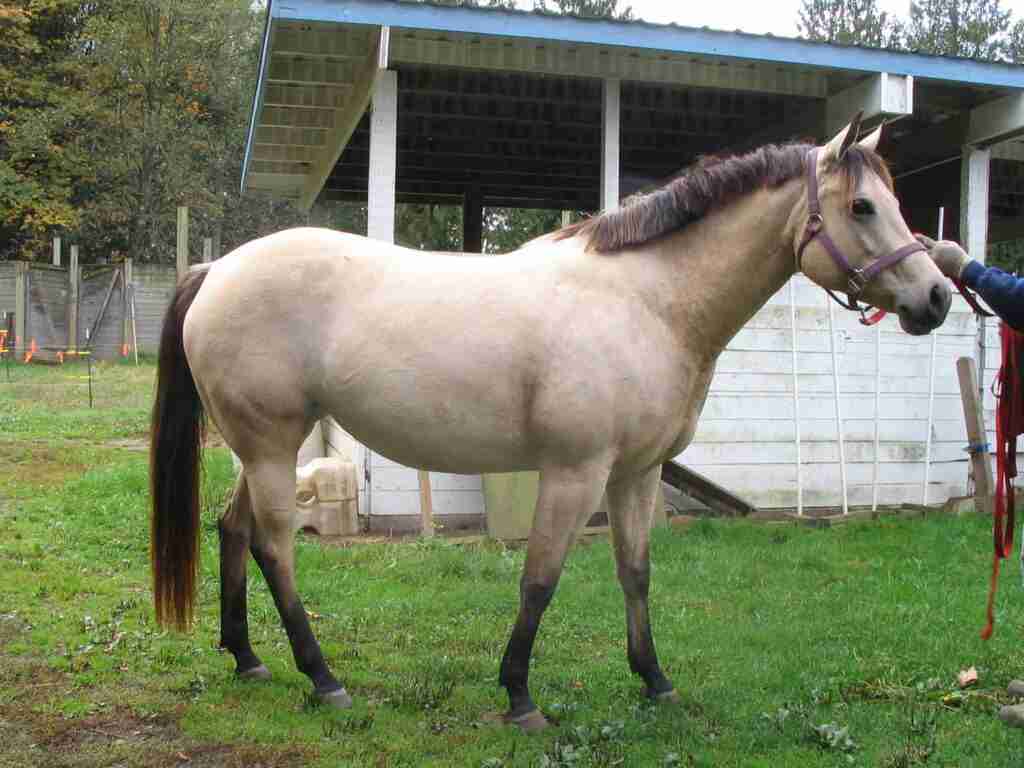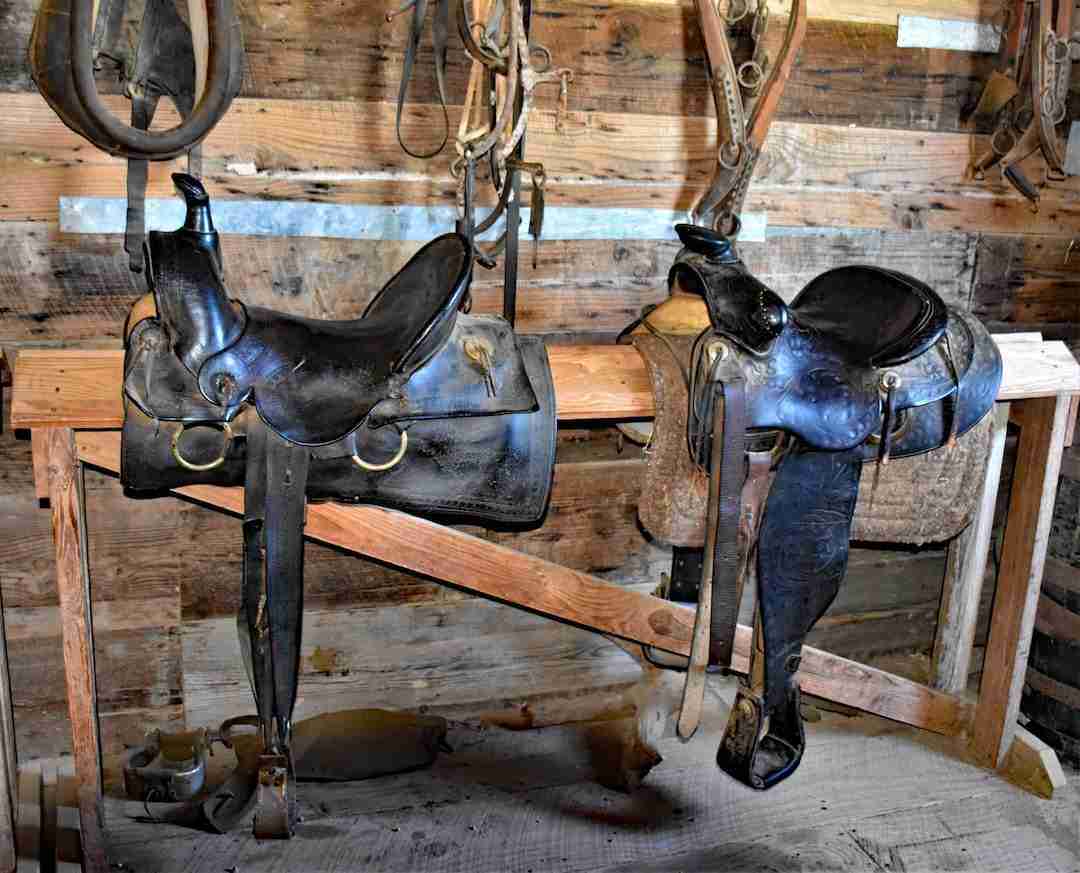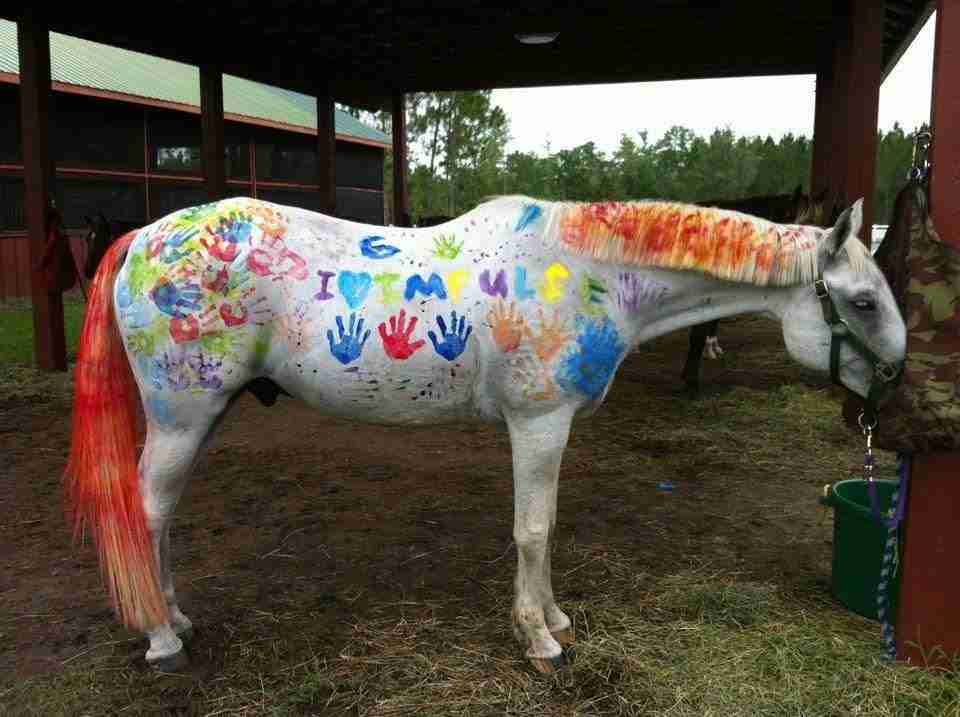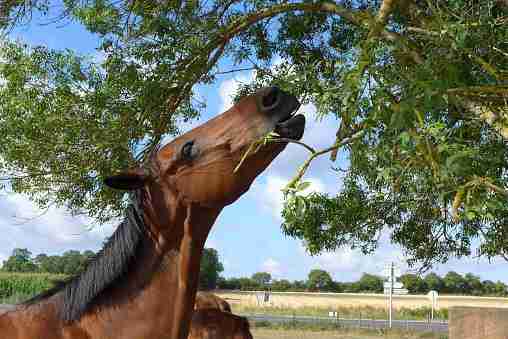Dun and buckskin horses often look similar, but they are different types of horses affected by various genetic factors. While it may be a tad challenging to tell them apart at times, there are ways to know whether you are looking at a dun or a buckskin horse. When all else fails, a genetic test will give you the final confirmation you need to know whether you have a dun or a buckskin horse.
Dun horses are affected by a dun dilution gene that lightens their coats and leaves their heads, manes, tails, and lower legs dark. They possess primitive markings and stripes. Buckskin horses are affected by a cream dilution gene that lightens bay coloring. The points remain dark in the buckskins.
If you have ever wondered what the differences between dun and buckskin horses are, you are not alone. Breeders and horse associations have studied these two types of horses for years. Thanks to genetic testing, we now have direct access to information about what causes the stunning shades we know and love in both dun and buckskin horses.
What Is The Difference Between Dun And Buckskin Horses?
When we look at what makes dun and buckskin horses different, a few key factors set them apart from each other. The main points that separate the dun from the buckskin include:
- The genetic makeup of dun horses
- The genetic makeup of buckskin horses
- The appearance of dun horses
- The appearance of buckskin horses
Join us as we uncover intriguing information about each of these factors.
1. The Genetic Makeup Of Dun Horses
Dun horses possess the dun dilution gene. It is a fairly common trait since the gene can affect any base coat color.
The dun dilution gene is a dominant one. That means that even if only one parent has it, the parent’s offspring will be affected, too.
Dun dilution affects both black and red pigment. The resulting colors include golden, dark gray, olive, apricot, and many other mixes.
An exciting aspect of the dun gene is that it is also found in wild equines. Zebras have the most distinct show with vibrant stripes and dark points. The dun trait can also be seen in wild asses and Przewalski horses.

2. The Genetic Makeup Of Buckskin Horses
Buckskin horses are a bit rarer than dun horses since only one copy of the gene must be present for the offspring to be affected.
The unique effect of buckskin can only be found on bay horses. Bay colors are brown or reddish brown. With the addition of the buckskin genetic dilution, the coloring becomes the color of tanned or golden deerskin.
Buckskin horse coloring occurs when only one copy of the cream gene is present. In addition, the agouti gene is found, resulting in the dark color of the tail, mane, head, and lower legs.
Since buckskin requires only one copy of the dilution allele, it is impossible to consistently breed horses of this nature.
3. The Appearance Of Dun Horses
Dun horses appear in a variety of colors. They can also be found sporting patterns of varying intensity and shape.
The main determining factors that may help to categorize duns by sight include the following:
- Duns have a majority of light, creamy color
- They have dark points, including their head, mane, tail, and lower legs
- Duns have dark marks on their ear tips or frames
- They have a dark dorsal stripe that stretches the entire length of the back
- They may have shoulder stripes, barred legs, or a cobwebbed appearance on their forehead
- The dun pigment can be present on top of any base coat color
The light, creamy color of dun horses are present because of the dun dilution gene. Since it can act on any base coat color, the color of duns can vary between apricot, dark grey, olive, golden, and many other shades.
Since dun is a dominant trait, even foals with only one dun parent will be born with this feature.
The dark points on dun horses are starkly visible against the creamy remainder of their bodies.
Expect to find dark tails, manes, heads, and lower legs. Although the mane is dark, there is sometimes a frosted appearance at the tips of the mane or dock of the tail. This is because of lighter hair found between the dark.
In addition to dark points, dun horses typically have a dark stripe that runs along the entire length of their backs. Although some buckskins also have a dark dorsal stripe, theirs do not extend all the way to the tail.
Duns sport dark marks on the tips or backs of their ears. These can form beautiful frames but should not be confused with horizontal stripes that are sometimes visible on the front of the ears on other horses.
Duns can have a speckled or dappled appearance. They typically have stripes on their legs and shoulders and often have stunning markings on their faces.
Note: An interesting point about cream dilution is that when it acts on a chestnut horse, the striking result is the well-known and loved palomino horse.

4. The Appearance Of Buckskin Horses
Although sometimes similar in appearance to dun horses, Buckskin horses can be told apart because of a few key features.
- Buckskins are only a variation of a bay-colored horse
- These horses have a black base coat
- They have dark points
- Some buckskins exhibit a dark dorsal line extending only part of their back
- Buckskins have the overall coloring of a tanned or golden deerskin
Other Articles You May Also Like
- How Often Do Horses Go Into Heat and When Do They Start?
- Quarter Horse vs Thoroughbred: What is Best?
- Do Hairless Horses Exist?
- What Is Live Cover Horse Breeding?
- Famous Red Roan Horses and Their Color Genetics. Metallic Cat, anyone?
Bay is the color brown or reddish brown found on horses. Although the buckskin coloring is only found on bay horses, it is essential to note that bay horses have a black base coat.
The black base coat allows buckskins to keep their dark heads, manes, tails, and lower legs as the agouti gene affects the coloring, lightening the black undercoat, although it remains darker than the rest of the diluted color.
Buckskins sometimes have a dark line on their backs. While this is a feature typically associated with duns, the difference is that duns’ dorsal lines extend the entire length of the back, even to the tail. Buckskins’ dorsal lines are not solid and end before reaching the tail.
Buckskins sometimes have primitive markings, just as with duns. The difference between a dun and buckskin in this regard, however, is that the markings on a buckskin are not well defined and as easy to see as a dun.
The overall color of buckskin horses is a tan, golden color with dark points.
What Is A Buckskin Dun Or Dunskin?
Buckskin duns, also known as dunskins, are the rare combination of both dun and buckskin genes in one horse.
Dunskins carry the cream dilution gene and the dun factor, also known as the dun dilution gene.
The overall appearance of a buckskin dun, or dunskin, is a light-colored tan horse. There may be primitive markings and a striking dorsal line.
Dunskins or buckskin duns are often mistakenly identified as zebra dun or baby duns. Their appearance is undoubtedly extraordinarily similar, and they also sport primitive markings known to buckskin duns.
When horses are still young and shedding their juvenile coats, it can be tough to determine whether they are dun, buckskin, or buckskin dun. If you are unsure what horse you have, it may be best to wait until it reaches maturity before making a final judgment.
It is challenging to be entirely sure whether or not a horse is a dunskin. If you are determined to know exactly what type of horse you have, genetic testing is the best way to find out for sure.
According to Helpful Horse Hints, a genetic test will show the following results for a buckskin dun:
- Black base (EE or Ee)
- Agouti (bay) (AA or Aa)
- Cream dilution (n/Cr)
- Dun factors (DD or n/D)
Genetic Testing For Dun, Buckskin, And Buckskin Duns
Confidently identifying a horse as a dun, buckskin, or buckskin dun can be highly challenging, even for the trained eye. If you are interested in learning the lineage and exact breed of horse you own, genetic testing will give you peace of mind.
Genetic testing is also a good idea if you plan to breed your horses. Since dun is a dominant gene, only one of the pair needs to be done to get a dun foal.
Genetic testing typically takes around fifteen business days, depending on the company and whether or not you require additional samples to be tested. This type of test will give you a clear insight into the genetic makeup of your horse.
You need to understand that buckskins cannot be consistently bred. If your horse is buckskin, it is not likely their offspring will be too. If your horse test results show that it is buckskin, know it is a beautiful and rare animal.

Countershading In Horses
Countershading, also known as counter shadowing, can be a matter that further confuses the identification of duns and buckskins.
Countershading has a similar appearance to primitive markings but has a few distinct differences.
Some horses have countershading only when they are juvenile. As they mature, the markings fade. If the marks disappear, the horse is not dun or buckskin.
Some dunskins have visible primitive markings only in the summer months. For this reason, they may not be identified as dunskin as owners may think their marks are countershading.
The dorsal stripe on a buckskin that does not reach as far as the tail is considered countershading and not a true primitive mark.
Conclusion
The differences between dun and buckskin horses are relatively subtle. To the untrained eye, they can be near impossible to detect. The main differences that are typically visible include the primitive markings, which can be present in buckskin and dun but are more pronounced in the dun. The dark dorsal line extends the entire length of the dun’s back and may be shorter or broken in a buckskin.
Duns possess a dominant gene, which means they can be bred, even if only one parent is dun.
Buckskins are not consistently bred since only one copy of the dilution allele is needed. Dun dilution genes work on any color. Buckskins can only be an adaptation of a bay horse. Dunskins are horses that have both dun and buckskin genes. The best way to know which horse you have is to have genetic testing done.
Resources
https://animals.mom.com/the-difference-between-a-dun-horse-a-buckskin-12449185.html









